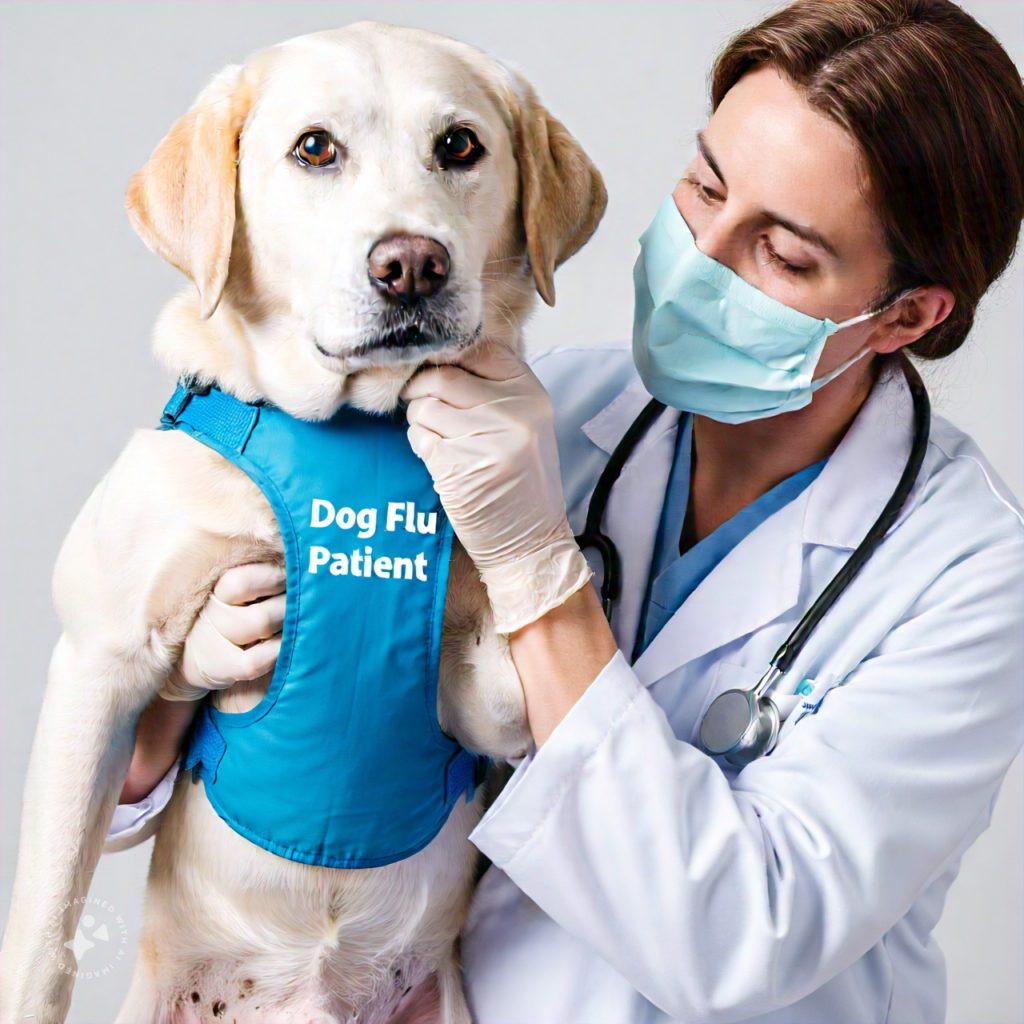Canine influenza, also known as dog flu, is a highly contagious respiratory infection that has garnered increased attention in recent years. If you’re a dog owner, understanding this illness is essential to protecting your furry friend. This guide delves into the causes, symptoms, prevention, and treatment of canine influenza, ensuring you’re equipped with everything you need to keep your dog safe.
What is Canine Influenza?
Canine influenza is caused by specific strains of influenza viruses that primarily affect dogs. Two major strains have been identified:
- H3N8 Influenza Virus: First discovered in racing greyhounds in Florida in 2004, this strain likely jumped from horses to dogs.
- H3N2 Influenza Virus: Originating in birds, this strain was identified in dogs in Asia and later spread to the United States in 2015.
Both strains are highly contagious and can spread rapidly in environments where dogs congregate, such as kennels, dog parks, and grooming facilities.
How is Dog Flu Spread?
Canine influenza spreads through:
- Direct Contact: Dogs sniffing, licking, or nuzzling each other.
- Aerosolized Droplets: Sneezing and coughing release virus particles into the air.
- Contaminated Surfaces: Shared items like water bowls, toys, or bedding can harbor the virus.
The virus can survive on surfaces for up to 48 hours, on clothing for 24 hours, and on hands for 12 hours, making hygiene crucial in preventing outbreaks.
Signs and Symptoms of Canine Influenza
Dog flu symptoms can range from mild to severe. Here’s what to look out for:
- Mild Symptoms:
- Persistent cough (dry or wet)
- Runny nose
- Mild fever
- Reduced appetite
- Lethargy
- Severe Symptoms:
- High fever (above 104°F)
- Difficulty breathing
- Secondary bacterial infections (e.g., pneumonia)
- Thick nasal discharge
In rare cases, severe complications can lead to hospitalization or even death. Puppies, senior dogs, and those with compromised immune systems are at higher risk.
Diagnosing Canine Influenza
If your dog shows symptoms of respiratory illness, consult your veterinarian immediately. Diagnosis often involves:
- Physical Examination: Checking for signs of respiratory distress.
- PCR Testing: Identifying the specific virus strain using a nasal or throat swab.
- X-rays: Detecting pneumonia or other complications in severe cases.
Timely diagnosis ensures appropriate treatment and reduces the risk of spreading the virus to other dogs.
Treatment Options for Dog Flu
There’s no specific antiviral treatment for canine influenza. Care focuses on managing symptoms and preventing complications:
- Supportive Care:
- Ensuring hydration
- Providing a warm, stress-free environment
- Medications:
- Prescribing antibiotics for secondary bacterial infections
- Administering anti-inflammatory drugs to reduce fever and discomfort
- Hospitalization: Severe cases may require oxygen therapy or intravenous fluids.
Dogs typically recover within 2-3 weeks with proper care.
Preventing Canine Influenza
Prevention is the best defense against dog flu. Here’s how to minimize your dog’s risk:
- Vaccination:
- Vaccines are available for both H3N8 and H3N2 strains.
- While not 100% effective, they reduce the severity of symptoms and viral shedding.
- Avoid High-Risk Areas:
- Limit visits to crowded dog parks or boarding facilities during outbreaks.
- Hygiene Practices:
- Regularly clean your dog’s belongings.
- Wash your hands after handling other dogs.
- Isolation: If your dog shows symptoms, keep them away from other dogs until they’ve fully recovered.
Is Canine Influenza Contagious to Humans?
Currently, there’s no evidence that canine influenza can infect humans. However, the virus’s ability to mutate means ongoing monitoring is essential. Practicing good hygiene and keeping your dog healthy protects not just pets but also their human companions.
What to Do During an Outbreak
If canine influenza is reported in your area, take these additional precautions:
- Stay informed about local outbreaks through veterinary clinics or public health advisories.
- Postpone non-essential social activities for your dog.
- Consult your vet about booster vaccines if your dog is frequently exposed to other dogs.
Frequently Asked Questions About Canine Influenza
1. Can any dog get canine influenza?
Yes, all dogs are susceptible, regardless of age or breed. However, puppies, elderly dogs, and those with pre-existing health conditions are more vulnerable to severe symptoms.
2. Can my dog catch flu from other animals?
Dogs can contract H3N8 and H3N2 strains, which originated in horses and birds, respectively. Direct transmission from these animals is rare but highlights the virus’s adaptability.
3. How can I tell the difference between kennel cough and dog flu?
Both illnesses share similar symptoms, but canine influenza often involves a higher fever and more pronounced lethargy. A vet can perform tests to confirm the diagnosis.
Conclusion
Understanding canine influenza is crucial for every dog owner. By recognizing the symptoms, practicing preventive measures, and seeking timely veterinary care, you can protect your pet from this contagious illness. Stay vigilant, especially during outbreaks, and consult your vet about vaccination options to keep your dog healthy and happy.

